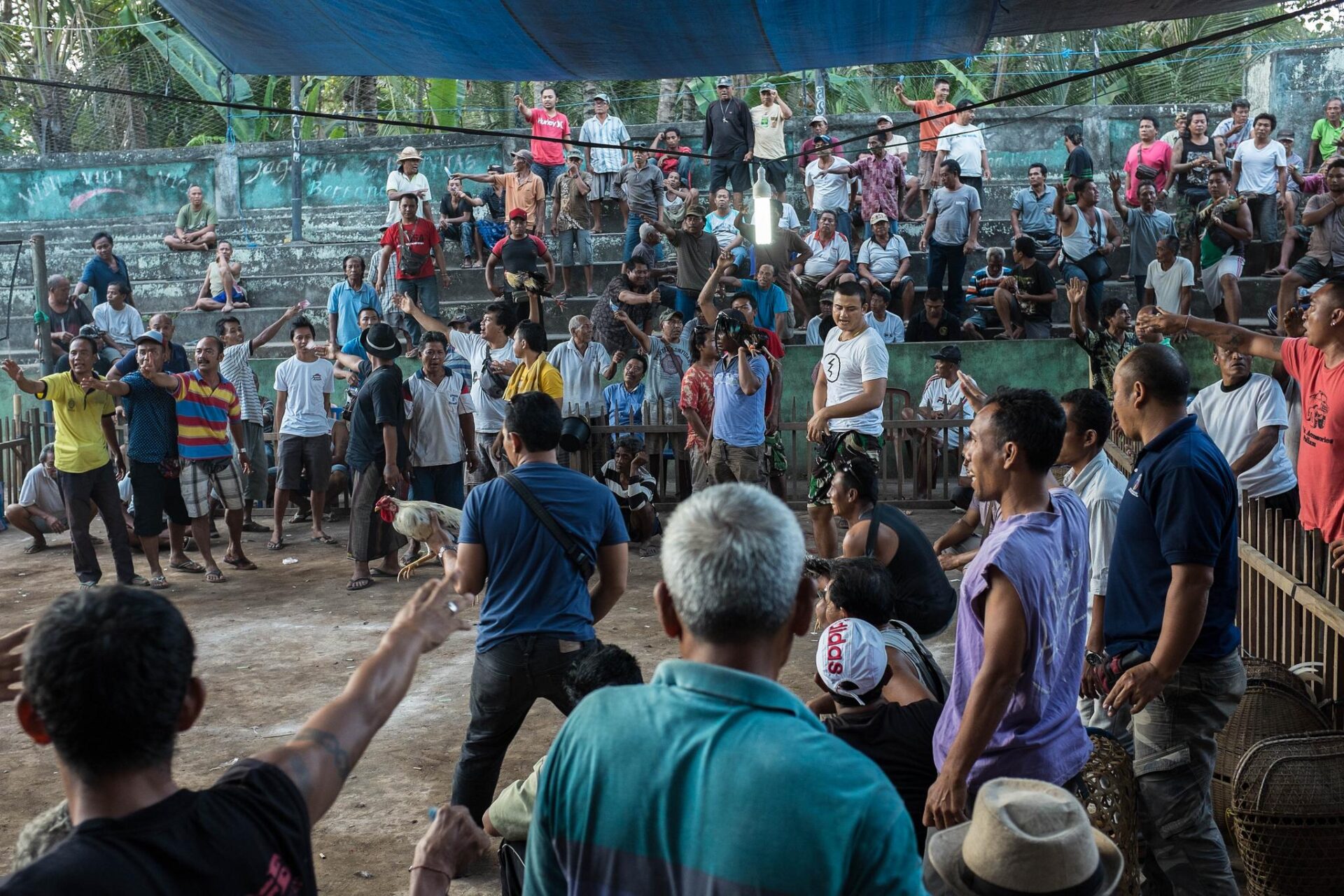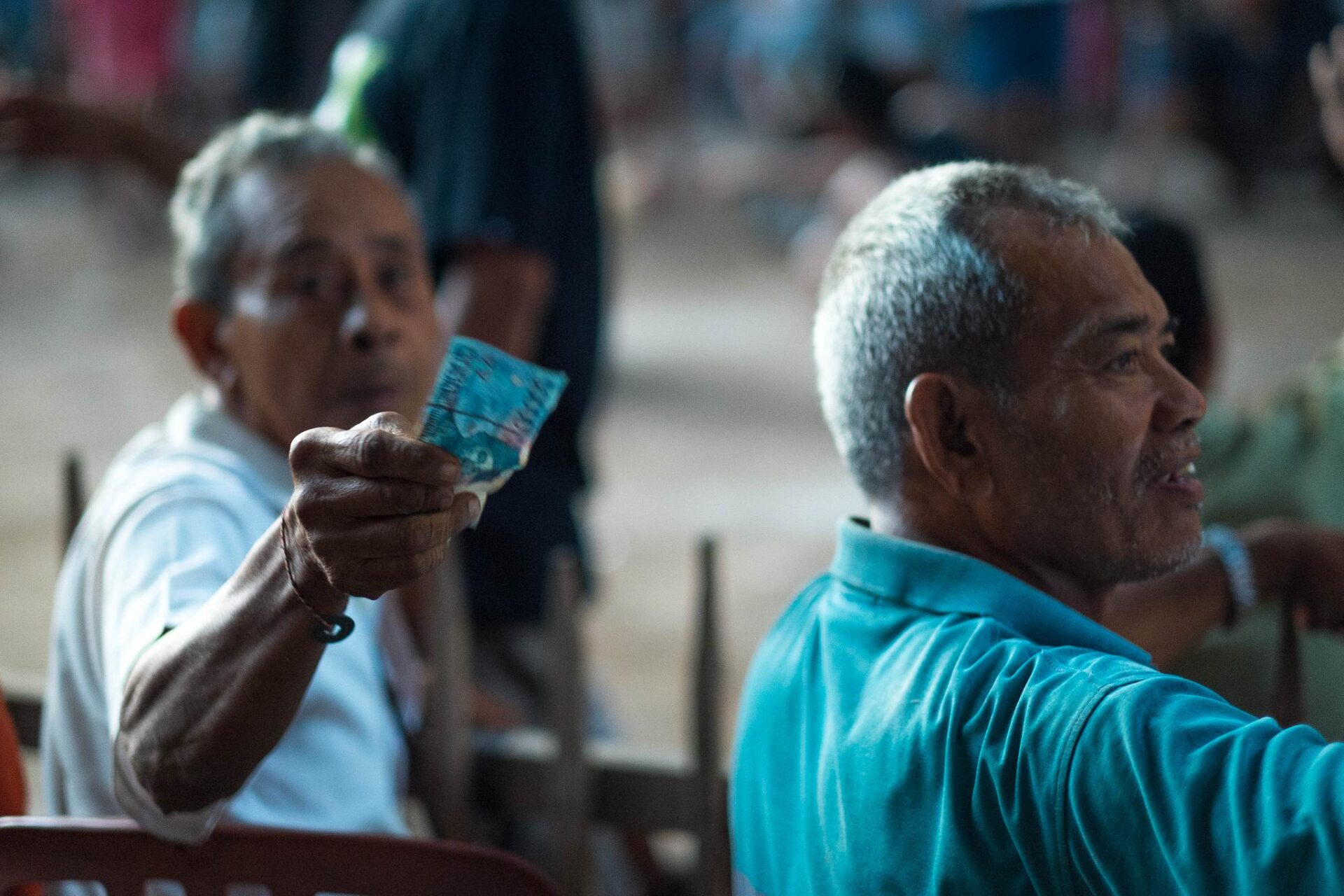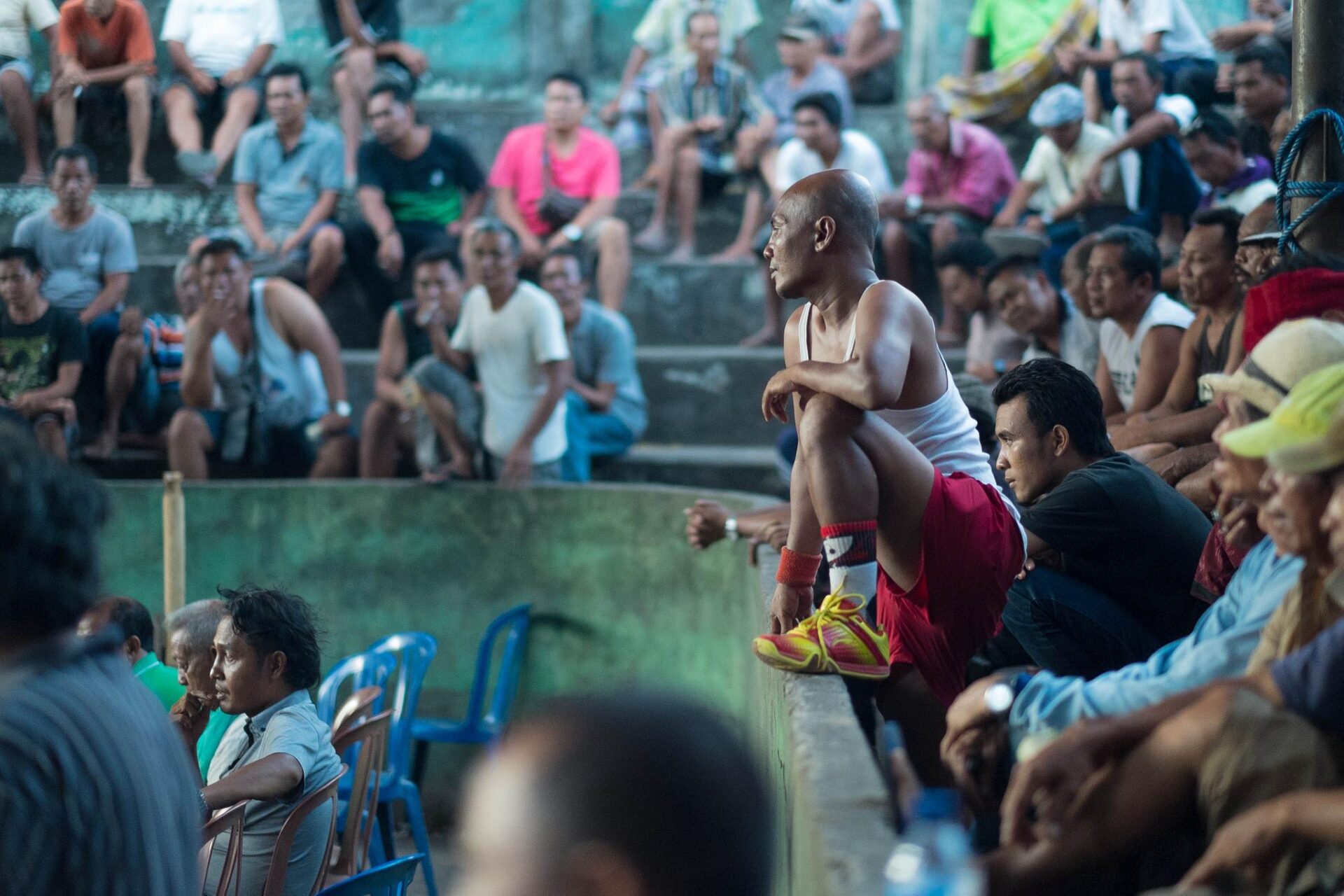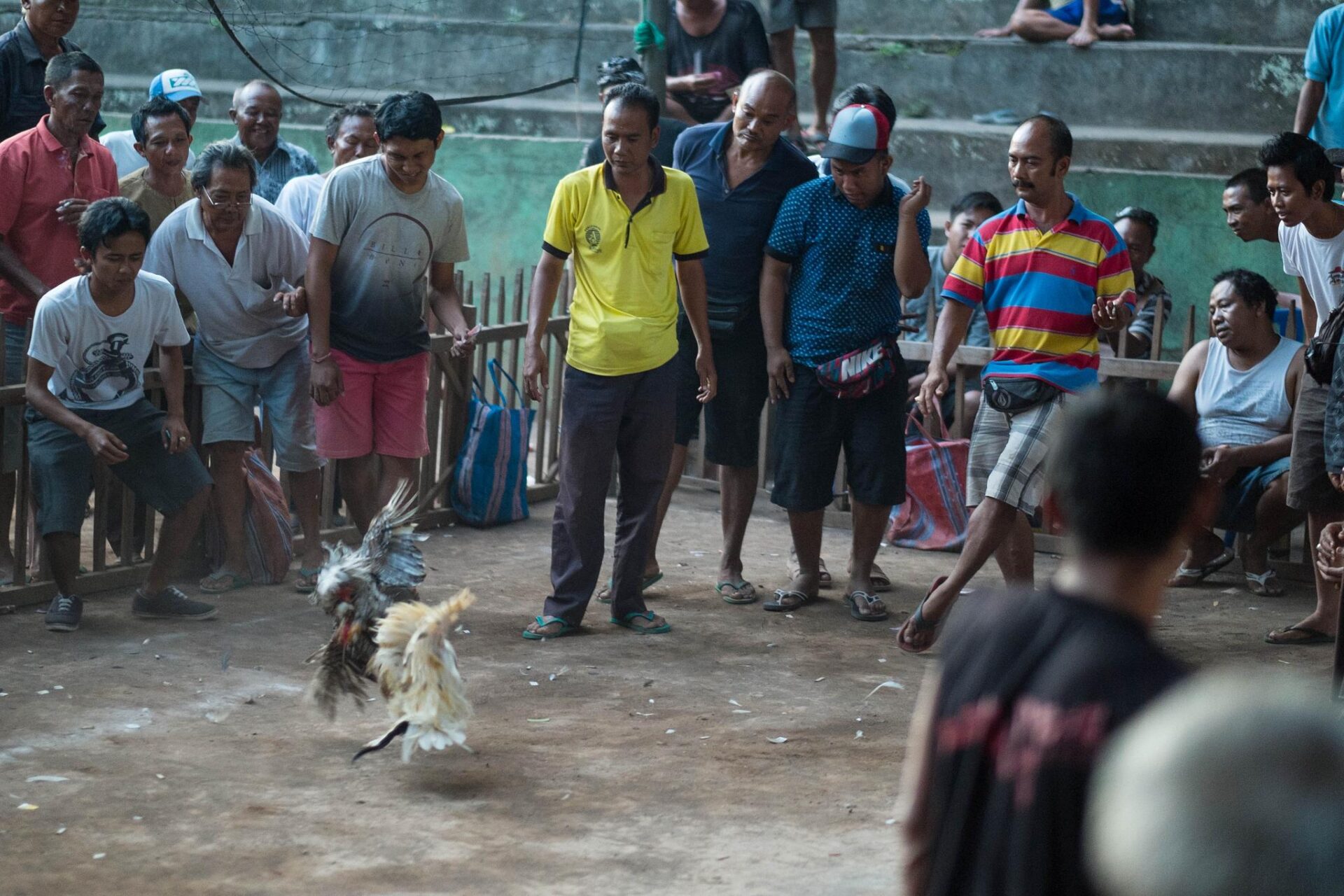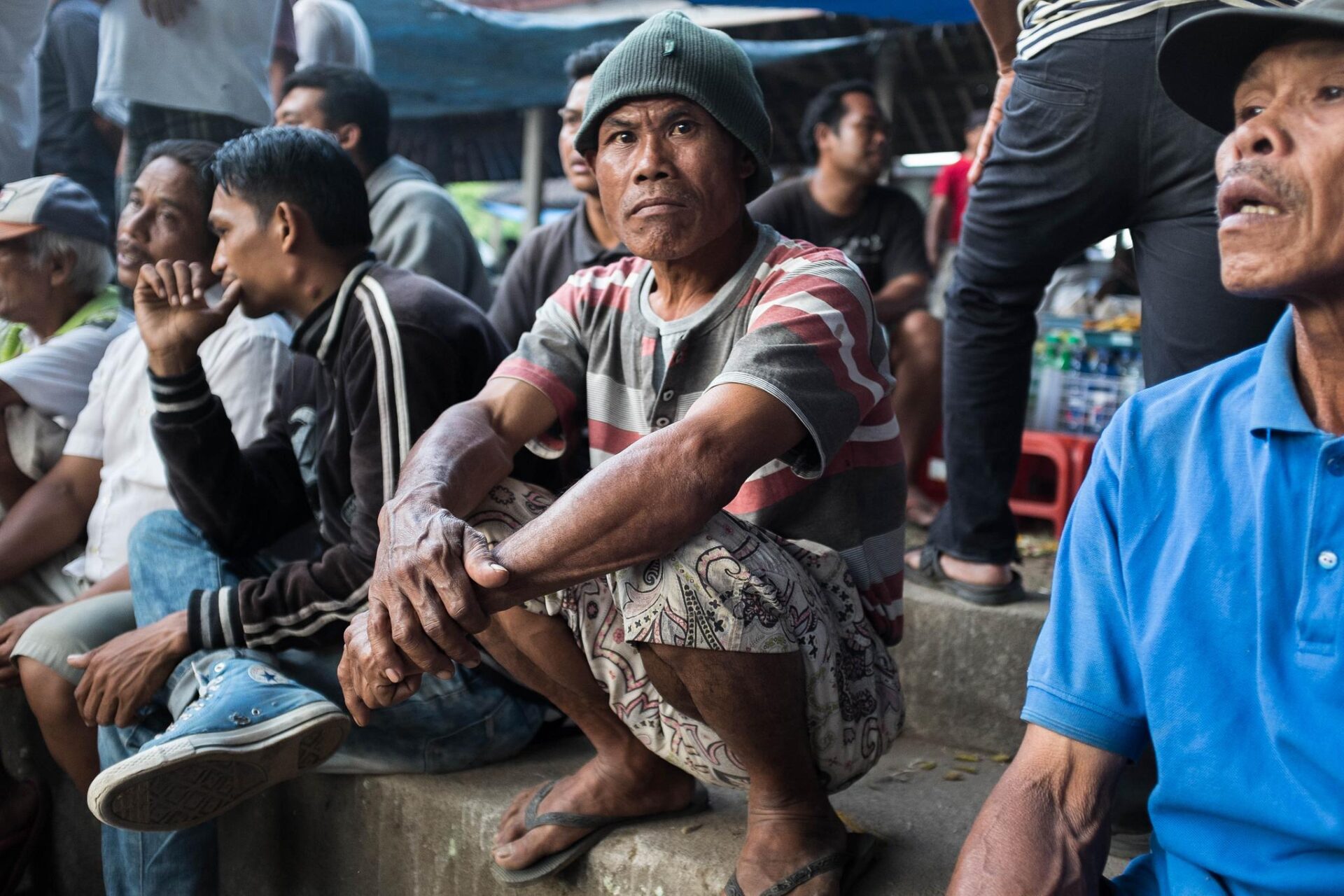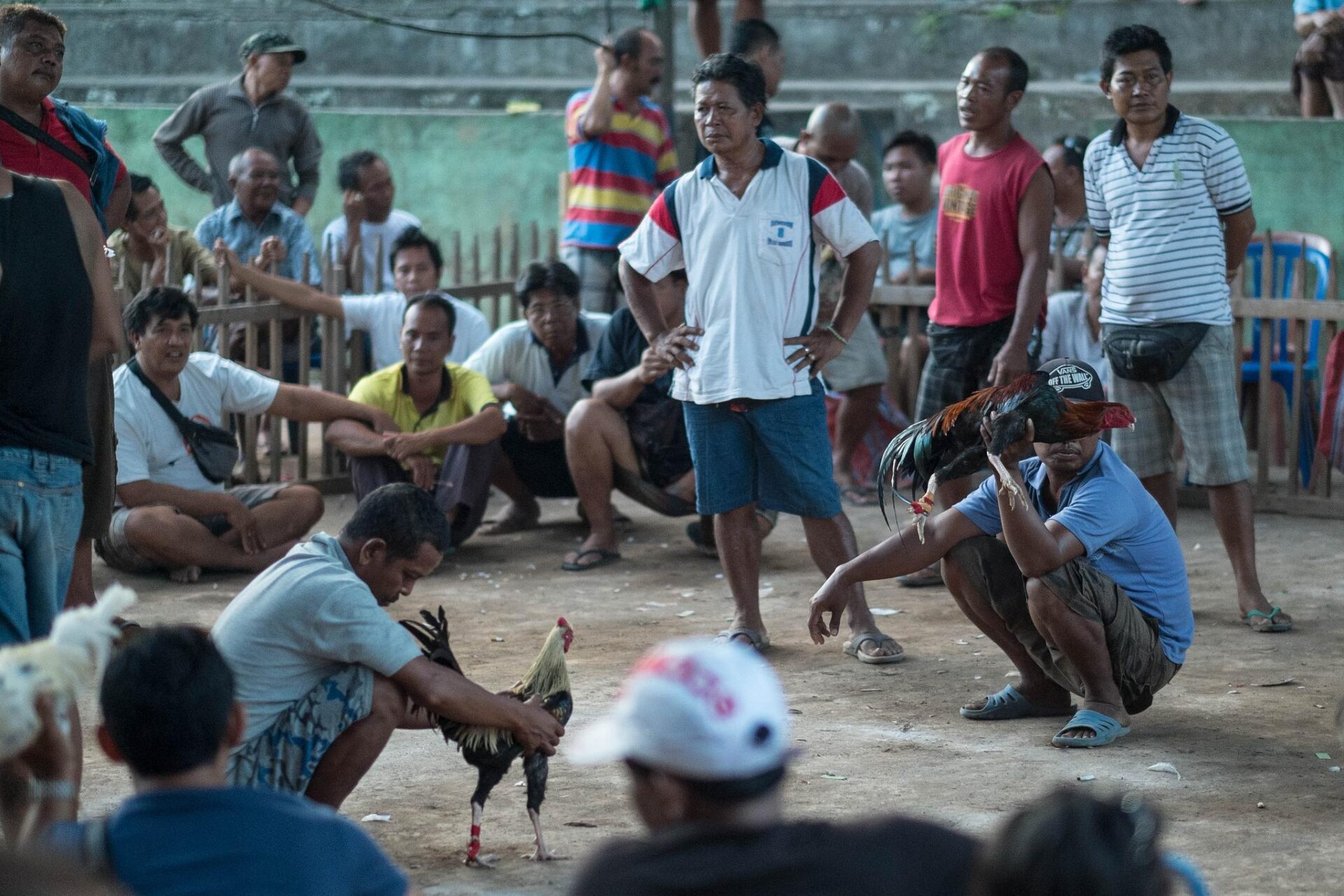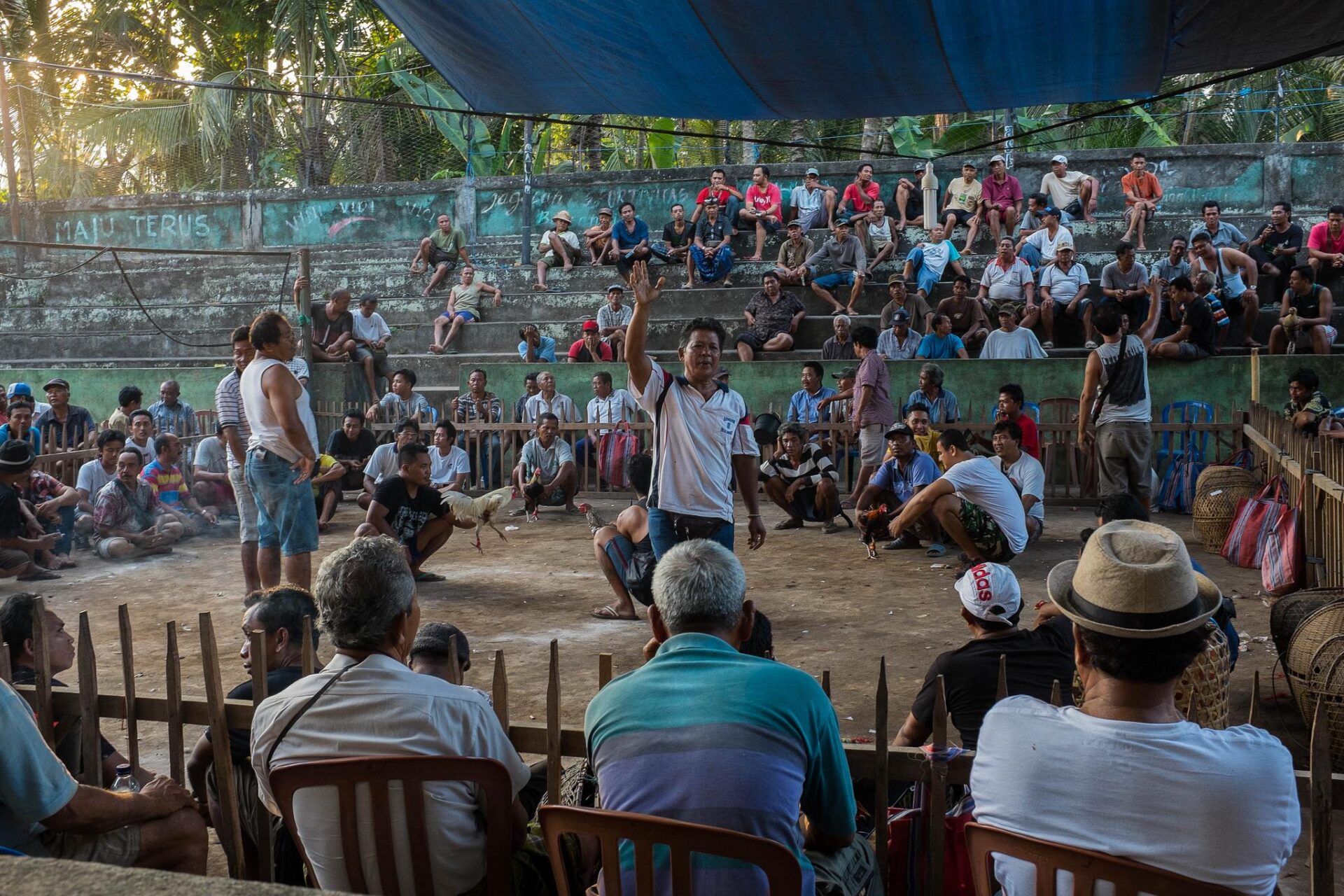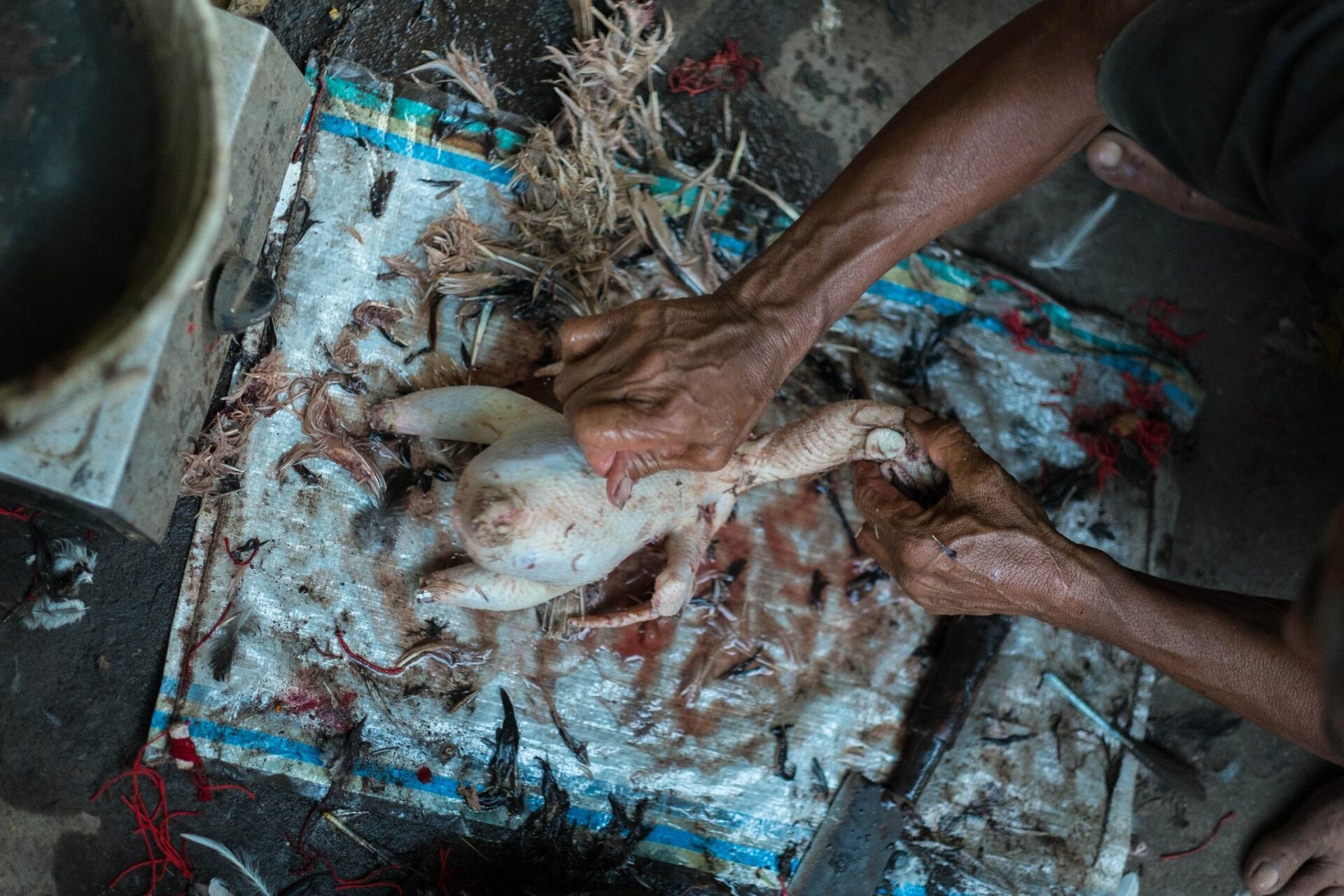COCKFIGHTING IN UBUD
The cockfighting, now controlled, was a time when it was unlikely, during a stay in Bali, not to have the opportunity to attend a cockfighting. They were frequent and each village organized them. Since 2005 they can by law only take place during some important religious festivities, and this again only in a very controlled way.
But in the mountains, the most traditional Balinese resist and it often happens that we come across a «illicit» cockfight, a large number of motorcycles parked at the roadside, usually signaling the presence.
Money, yes, but much more.
If we decide to take a closer look, we do it timidly. Perhaps for fear of discovering a less «glorious» facet of Balinese culture, a wilder aspect, far from the refinement of ceremonies and dances, but nevertheless curious to finally attend this show for which the Balinese are passionate, They spend part of their time sitting in front of their house cuddling their cocks. But appearances can be misleading. Around and in the battle arena, in the heat, the dust and the smell of blood, in the midst of screams and gesticulations, in all this apparent disorder is played much more than money.
The course of the cockfights
1. Choice of opponents
The fight (tetadjen or sabungan) takes place in a square arena about fifty feet sideways, a little more than six meters. A program consists of nine or ten matches (sehet). There is no “poster”, all the matches are the same. Between two games, a dozen men enter the arena. Each carries a rooster and goes in search of the ideal opponent. This whole phase takes place as discreetly as possible, in half voice, calmly and indirectly. An atmosphere of concealment permeates the places where a bloody fight has just taken place, and where the next one is being prepared. Once the next two opponents are determined, each rooster is attached to its spur (tadji). Their length can vary from ten to twelve centimeters. Their fixation requires special know-how, and each village has only five to six eperoniers.
2. The Clash
The man who fastens the spurs is also the one who provides them, and if the rooster he teams is victorious, the owner gives him the paw to spur of the defeated. Spurs are steeped in a vast tradition. They are sharpened only on full moon nights, or during eclipses. They must also be hidden from the eyes of the women. The two cocks are armed and are put face to face in the middle of the arena. The two men who handle them (pengangkeb) are not necessarily the owners. Place a coconut pierced with a hole in a bucket of water. The time it takes to sink (about twenty seconds) is punctuated at the beginning and at the end by a gong. It also marks a period when manipulators are not allowed to touch cocks. If the animals have not clashed during this period, they are taken back in hand. This «coaching» includes various stimulations, we inflate their feathers, we stretch their wings, we insult them. Then they are put back in the middle of the arena and the process starts again. If they still refuse to fight, we resort to a wicker cage in which we place the two protagonists, and usually they engage the battle.
3. Arbitration
From the moment a decisive blow seems to have been carried out by one of the cocks, its manipulator seizes it immediately to avoid a blow in return. Otherwise, the match would end in a spaceroom where the two cocks would gut each other in a final melee. The cocks are in the hands of their handlers. Three times we put the coconut in the bucket, after which we put the cocks on legs. The one who gave the blow must be able to stand up. Previously, the manipulator of the wounded rooster frantically worked his beast. The rule is clear: if a rooster can walk, he can fight, and therefore kill. The important thing is to know which one will die first. All these rules and the prodigious meticulousness that accompanies them are laid on palm leaves (lontal), manuscripts transmitted from generation to generation, elements of the general tradition of the villages, both legal and cultural. In a fight, the referee – the coconut man (saja kommong, djuru kembar) – is in charge of enforcing his rules, and his authority is absolute and uncontested. Only extremely solid and trustworthy citizens perform these functions but also, given the complexity of the code, superiorly educated. They are actually judges, kings, priests and police officers. Under his leadership, the fury of the fight remained within civic and legal limits.
4. Betting
There are two kinds of bets during the cockfight. The first, the singular bet (toh kentengah) corresponds to the central axis formed by the two main opponents. It is a big, collective bet, which includes coalitions of bettors grouped behind the owner. The coalition members and the referee arrange it calmly and thoughtfully. It is official and also enclosed in a whole network of rules. The bettors are the two owners, the referee plays the role of monitor and public witness. The second corresponds to the swarm of bets made by spectators around the arena (toh kesasi). It is a bet in small, individual, which is committed from man to man. The excited of the perimeter shout it on a whim, it is a public offer with public welcome. The donor, who solicits the bet, will signal the importance of his bet by holding a number of fingers apart in front of his face, and shaking them vigorously. If the taker, who is asked, makes a matching answer, the bet is taken. Otherwise, the eyes leave and resume the search. At the moment when the manipulators are going to release the cocks, the clamor takes on an almost frantic magnitude: those who have not yet wagered are desperately looking for a last minute partner, for an acceptable bet. Then there is the sudden calm as the fight begins. At the end (fifteen seconds to five minutes later), all bets are paid immediately. The Balinese try to create an interesting, «deep» fight, by setting a central stake as strong as possible. Thus, the roosters present will be the best and best matched, and the outcome of the fight very uncertain. The central bet appears as a mechanism to create «serious» matches.

